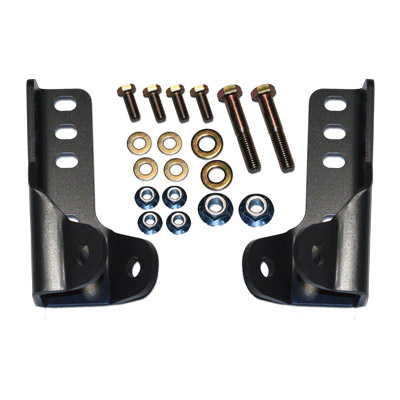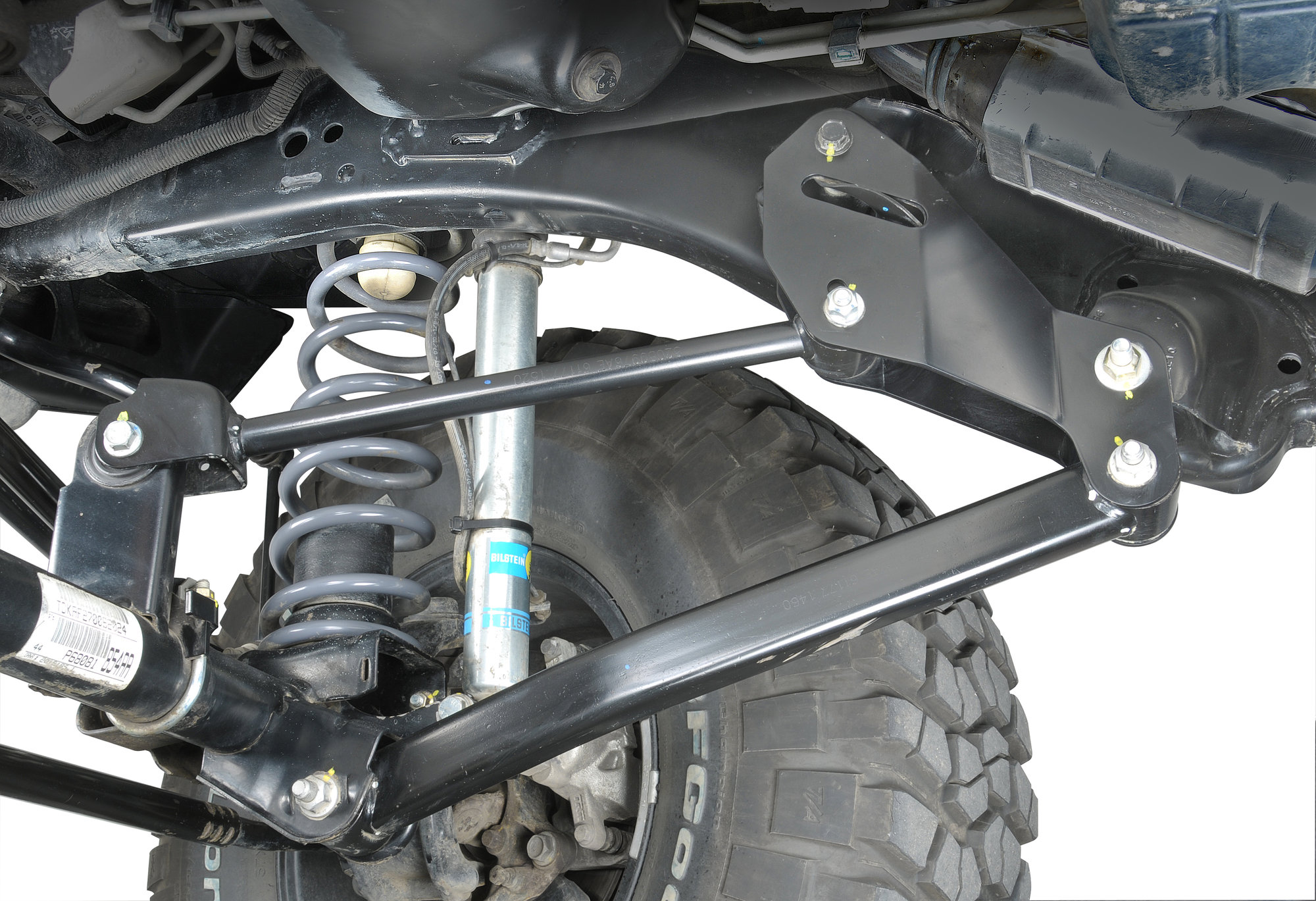

If you want it to lift more, you need the line to be closer to the center of gravity or above 80 percent. If it is within the 50 percent to 80 percent of the center of gravity height at the front tire that we determined in Figure 7, then it should be a good amount of antisquat to start from.
SYNERGY SUSPENSION LOWER LINK MOUNT PATCH
The line from the instant center to the contact patch of the rear tire should run across the vertical line through the front tire.

The point towards the front of the vehicle where the links would converge is known as the instant center (IC). An acceptable angle will have the lower link's separation at the frame equal to 50 to 70 percent of axle-mount separation, which may require fabricating a crossmember to mount them to, as discussed earlier. The best route seems to be a slight angle, but not at severe as the upper links. An angled set of lower links helps the upper links locate the axle laterally and fight rear steer, but also requires a larger area to slide over obstacles. The lower-link's extended lines should converge at a LCP somewhere forward of the transmission, depending on how much of an angle you give them when looking at the top view. The upper-link's extended lines will most likely converge at a LCP just behind the rear axle. These convergence points are known as the lateral constraint points (LCP). First you need to draw in lines extending from the links until they converge when viewed from the top of the vehicle. To reduce the rear steer of the axle, we need the tire to move towards the center of the frame, side to side, as it articulates and not towards the center of the frame, front to back. If this is getting confusing, then you are normal if it's clear as a bell, you may be a bit too smart for your own good. Continue by plotting the upper- and lower-link axle-mount points. The limiting factor will most likely be the bed of the truck. The farther apart you can get them right now, the better, as this will help control the leverage of the tires and fight axlewrap. You will most likely be mounting the links 8 to 11 inches apart. If you were running 36-inch tires, you would want the upper links to be mounted 9 inches above the lower-link mount. Use that number as the distance in inches that the upper link will be above the lower link at the axle. To find the upper-link axle-mount point, multiply the tire diameter by 0.25 (25 percent). If your truck is going to be very tall, you may want to put these links on the top of the axletube.

Some people mount this above or below the axletube, but we have found that the important part is more the difference in height from the upper-link mount. Skid wraps around the control arm mount to protect the thin O.E.M.Now plot a point on the front center of the rear axletube. Laser cut from 3/16" steel & 2 stage powdercoat finish for maximum strength and durability Raises lower shock mount 1-3/8" higher than stockĬan be welded to the control arm mount for maximum protection Rear lower control arm skids with integrated shock mounts Gidday Ludski, I have the Synergy Jeep JK Rear Lower Control Arm Skids w/ Integrated Shock Mounts, awesome bit of kit, see extract from website below, the photos attached are not of mine, they are from web site, I run the Fox Remote Shocks, I also have the Synergy Jeep JK Rear Sway Bar Drop Bracket Kitīolt-on design strengthens the factory control arm mount


 0 kommentar(er)
0 kommentar(er)
